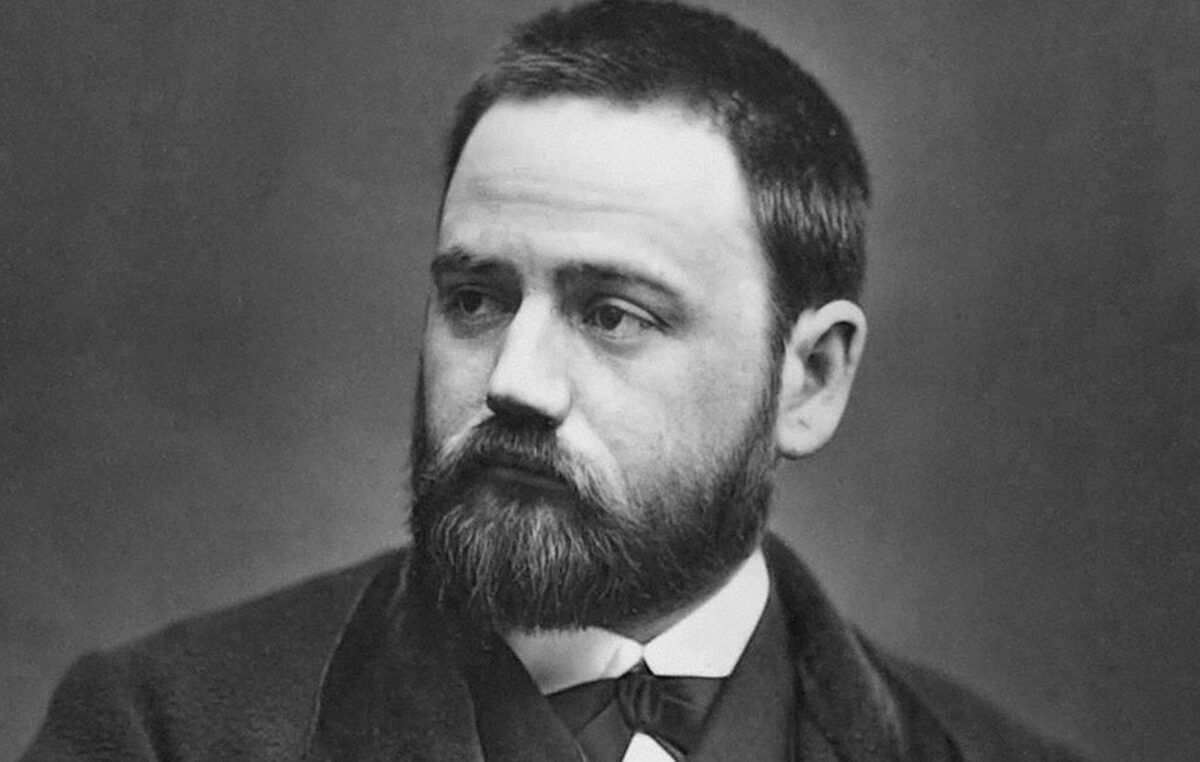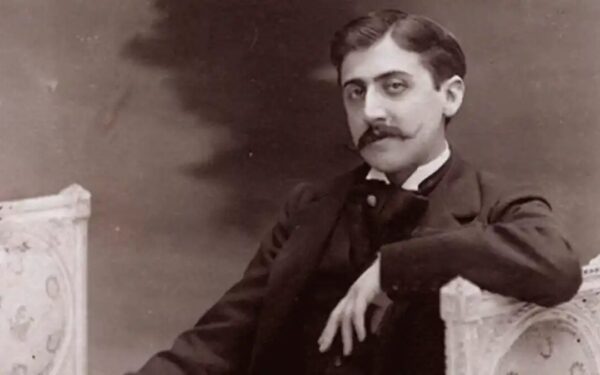Why You Should Read Émile Zola: His Best Novels

Disclaimer
This post may contain affiliate links. I will make a small commission if you make a purchase through one of these links, at no extra cost to you. See full disclosure and disclaimer policy HERE.
Émile Zola – the name alone brings to mind powerful imagery, intense drama, and unflinching depictions of human struggles. But in today’s world, where our attention is constantly pulled in a thousand directions, why should we bother with the works of a 19th-century French novelist? Well, there are plenty of reasons, actually! Zola’s writing isn’t just a dusty relic of the past; it’s raw, relevant, and resonates with themes that are still deeply impactful today. Let’s dive into why you should consider picking up a book by Émile Zola.
Table of Contents
Who Was Émile Zola?
Émile Zola was born to François Zola, an Italian engineer, and Emilie Aubert. After his father’s death, Zola and his mother struggled financially, which impacted his education and gave him a first-hand understanding of poverty and hardship. His early life experiences shaped his empathy for the working class and the underprivileged, themes that he would later explore in his novels.
Despite financial difficulties, Zola was drawn to literature and pursued a career as a writer. He started working as a clerk and a journalist, which led him to the literary circles of Paris. As he gained experience, his writing developed a distinct style that combined realism with a scientific approach to human behaviour, which he would later call “Naturalism.”
Unlike Romanticism, which idealised life and nature, Naturalism sought to show life as it truly was, influenced by the environment, heredity, and social conditions.
Zola believed that human behaviour could be studied scientifically, like any other natural phenomenon, and he applied this idea to his characters. He viewed them almost as “specimens” in an experiment, shaped by their surroundings, social class, and family history. This scientific and sometimes clinical approach set him apart from his contemporaries and laid the groundwork for a new kind of literature that would influence generations of writers.
Zola was not only a novelist but also an outspoken social activist. One of the most defining moments of his life was his involvement in the Dreyfus Affair, a major political scandal in France. In 1894, Alfred Dreyfus, a Jewish officer in the French army, was wrongfully accused and convicted of treason. Zola believed Dreyfus was innocent and that anti-Semitism played a significant role in his conviction.
In 1898, Zola published an open letter titled J’accuse…! on the front page of the newspaper L’Aurore, accusing the French government and military of a miscarriage of justice and calling out their anti-Semitic prejudice. This letter created a massive public uproar and polarised French society. Zola’s courageous stand ultimately led to a retrial, and years later, Dreyfus was exonerated. However, Zola faced serious consequences for his actions, including a trial for libel, a fine, and temporary exile to England.
The Dreyfus Affair solidified Zola’s legacy as a writer who was unafraid to challenge injustice and fight for truth. His intervention in the case remains one of the most famous examples of an intellectual using their platform to promote social justice.
Émile Zola died on September 29, 1902, under mysterious circumstances related to carbon monoxide poisoning. While some suspect foul play due to his involvement in the Dreyfus Affair, no definitive cause was proven. Zola left behind a monumental literary legacy, influencing not only French literature but also writers around the world.
Today, Zola is celebrated not only as a great novelist but also as a champion of truth and justice, a figure whose contributions reach far beyond the pages of his books.
A Masterclass in Realism
Zola didn’t sugar-coat things. In fact, his work is often described as “naturalism,” a type of realism that digs deeper into the gritty details of life. If you’re tired of overly idealised characters or predictable stories, Zola’s works might just be the refreshing jolt you need. He shows life in all its messy, chaotic, and sometimes ugly glory.
Imagine a painter who decides not to paint a sunset or a field of flowers but instead captures the lives of ordinary people, their hardships, and their triumphs. That’s Zola for you. His stories give you the sensation of walking alongside these characters, experiencing their lives first-hand.
Vivid, Multi-Dimensional Characters
Zola’s characters aren’t superheroes or villains—they’re human. He portrays them with all their flaws, dreams, fears, and ambitions. You don’t just read about them; you come to know them intimately, almost as if they were real people you’d meet on the street. He dives deep into the psychology of his characters, creating complex, layered personalities that are both relatable and fascinating.
Zola doesn’t shy away from exposing the raw emotions of his characters, allowing you to see every side of them—their light and their shadows. This makes his novels an intense reading experience, where you feel connected to people from a completely different time and place.
Immersive Storytelling with a Purpose
Zola was a storyteller with a purpose. His writing isn’t just about keeping readers entertained; he wanted to provoke thought and spark discussions. His stories often address social injustices and raise ethical questions that stay with you long after you’ve finished the book.
Every novel has layers to it; on the surface, you might see an engaging story, but dig a little deeper, and you’ll find powerful social commentaries. Zola’s storytelling style immerses you so deeply that it feels like you’re part of that world, observing its faults, failures, and fleeting joys.
RELATED:
Unveiling The Timeless Beauty Of Classic French Literature
Most Notable Novels
Émile Zola wrote extensively and is celebrated for his brutally realistic portrayal of 19th-century French society. Most of his best-known works are part of his Rougon-Macquart series, which consists of 20 novels that explore the lives of a single family across generations, touching on social, economic, and political themes. Below are some of his most notable novels, each of which holds a special place in literary history.
1. Germinal (1885)
Germinal is perhaps Zola’s most famous and powerful novel, exploring the struggles of coal miners in northern France. This book provides an intense, vivid portrayal of the harsh realities of the working class, with the protagonist, Étienne Lantier, joining a mining community and witnessing the exploitation and brutal conditions the miners endure.
Germinal is widely regarded as one of the most influential novels in labour literature. Its realism and empathy for the working class made it a ground-breaking piece, and it’s often cited as a symbol of social justice. The novel had a lasting impact on both literature and social reform, inspiring workers’ movements around the world.
2. Thérèse Raquin (1867)
This early novel tells the dark and tragic story of Thérèse Raquin, a young woman trapped in a loveless marriage to her sickly cousin, Camille. She embarks on a passionate affair with Laurent, Camille’s friend, leading to a chilling murder plot and subsequent descent into guilt and madness.
Thérèse Raquin was Zola’s breakthrough novel and laid the foundation for his naturalistic approach to literature. It’s a grim psychological study of human passion, crime, and guilt, showcasing Zola’s ability to explore the darker sides of human nature. The novel shocked readers at the time with its frankness and intensity, establishing Zola’s reputation as a fearless and innovative writer.
3. Nana (1880)
Nana follows the rise and fall of a Parisian courtesan, Nana Coupeau, who becomes a symbol of decadence and moral decay in French society. Through Nana’s life, Zola exposes the corruption, hypocrisy, and shallowness of the wealthy elite who are captivated and ultimately ruined by her.
Nana was both scandalous and wildly popular, shedding light on the moral failings of French high society. The character of Nana represents Zola’s critique of the superficiality and destructiveness of the upper classes, and her story is one of tragic ambition and inevitable downfall. The novel’s portrayal of sexuality and societal rot was ground-breaking at the time and continues to be celebrated for its bold social commentary.
4. The Beast Within (La Bête Humaine, 1890)
This novel is a dark exploration of human nature and violence, set against the backdrop of the French railway system. The story follows Jacques Lantier, a troubled train engineer with violent impulses, and the people around him whose lives are intertwined with the brutal and tragic events that unfold.
La Bête Humaine delves into the psychological aspects of crime and primal instincts, highlighting the duality of civilisation and savagery within humans. The novel is both a suspenseful thriller and a commentary on the destructive nature of suppressed desires. Its complex narrative and exploration of psychological violence make it one of Zola’s most gripping works.
5. L’Assommoir (1877)
L’Assommoir (translated as The Dram Shop or The Drinking Den) tells the tragic story of Gervaise Macquart, a laundress in Paris who dreams of a better life but gradually falls victim to poverty, alcoholism, and the destructive forces of her surroundings. The novel focuses on her decline and the impact of alcoholism on her family and community.
L’Assommoir is often considered one of Zola’s masterpieces, offering a raw and sympathetic portrayal of working-class struggles. Its unflinching depiction of addiction, poverty, and domestic life shocked readers at the time, and it has been praised for its powerful, realistic storytelling. The novel contributed to Zola’s reputation as a social reformer, as it exposed the brutal effects of alcoholism and poverty on ordinary people.
6. The Ladies’ Paradise (Au Bonheur des Dames, 1883)
This novel centres on Denise Baudu, a young, innocent woman who moves to Paris and starts working at a glamorous department store called Au Bonheur des Dames (The Ladies’ Paradise). The story showcases the rise of modern consumer culture, the effects of capitalism, and the impact of new retail practices on small businesses.
The Ladies’ Paradise is a fascinating study of capitalism, consumerism, and social change. Through Denise’s experiences, Zola illustrates the transformation of Parisian society and the birth of consumer culture. The novel highlights Zola’s talent for capturing the forces of modernization and the complexities of a rapidly changing society.
7. The Earth (La Terre, 1887)
The Earth focuses on a rural farming community and depicts the lives, conflicts, and harsh realities faced by peasants in the French countryside. The novel’s protagonist, Jean Macquart, is a war veteran who becomes a farmer and witnesses the brutality, greed, and struggles of agricultural life.
Known for its brutal realism, The Earth shocked readers with its unfiltered look at rural life, including intense scenes of greed, violence, and betrayal. It’s one of Zola’s most controversial novels due to its graphic content, but it’s also a significant piece of social commentary on the plight of the peasantry. The novel highlights Zola’s commitment to exposing the harsh conditions of all social classes, from urban workers to rural farmers.
8. Pot-Bouille (1882)
Pot-Bouille, often translated as Piping Hot!, is a satirical portrayal of life in a Parisian apartment building, focusing on the hypocritical and petty lives of its bourgeois residents. Through the character Octave Mouret, Zola shows the pretensions, rivalries, and moral failings of middle-class society.
Pot-Bouille is a biting satire of the bourgeoisie, filled with humour and irony. It’s an entertaining yet critical look at middle-class values and the hidden scandals behind respectable facades. This novel serves as an unflinching dissection of societal hypocrisy, making it one of Zola’s most entertaining yet socially observant works.
Expansive Themes that Transcend Time
The beauty of Zola’s writing is that his themes are timeless. He explores universal aspects of the human experience—struggles with poverty, ambition, love, betrayal, and resilience. These are issues that anyone, anywhere, at any time, can relate to.
You don’t have to be a French miner or a Parisian socialite to feel the impact of his stories. The emotions, conflicts, and questions he raises are universal, making his works just as powerful and relevant today as they were in his time.
Reading Zola can feel like stepping into a different world while still seeing parts of our own lives reflected in his characters and themes. His works remind us of the complexities of society and the resilience of the human spirit, making his novels not just entertaining but also deeply thought-provoking.
Conclusion
So, why should you read Émile Zola? Because his writing doesn’t just entertain—it challenges, it enlightens, and it evokes empathy for lives and struggles that might otherwise go unnoticed. Zola’s works are a blend of raw realism, powerful storytelling, and social activism. They serve as a reminder of both the strength and frailty of the human condition.
Through his books, you’ll gain insights into history, society, and, ultimately, yourself. So, pick up a Zola novel, and let yourself be swept away into the vivid, turbulent world he paints. You may find that his words have a lot more to say about today than you ever expected.
FAQs
Did you like it? Pin this post for later!


















